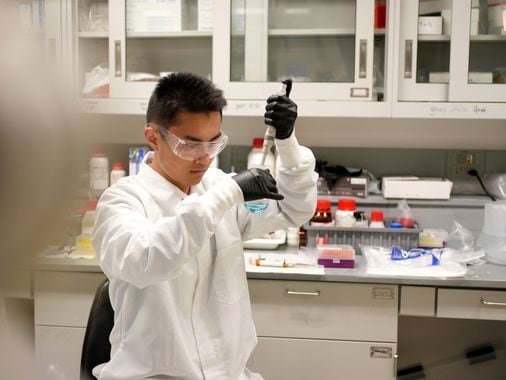Unlike traditional materials that harm both people and the planet, our materials significantly improve sustainability and ensure material health. EcoForge’s bio-based building products help construction projects secure permits, reduce carbon emissions by up to 40 percent, and save on future energy costs, estimated at more than 15 percent on heating and cooling.
Q. How does EcoForge fit into both of your experiences?
A. With my extensive experience in industrial design at NASA and at Subaru, Nissan, and Amazon, I’ve worked on future clean mobility concepts and innovative products like the Kindle, and led global initiatives focused on sustainable materials. My passion for sustainability is complemented by a strong background in innovation and design excellence.
My cofounder, Myung Bender, is a seasoned entrepreneur. Her startup was acquired by Apple, and as the former head of product at Bumble, she brings strong business acumen and operational expertise. We’ve both developed numerous products, and we are now focusing on products that significantly impact our health and the planet.
Q. What kinds of “agricultural residues” are you using? And what kinds of building materials can they be transformed into?
A. Our technology is highly compatible with various plants, allowing us to form building products by leveraging their natural material structures. Agricultural residues like hemp/cannabis waste, sunflower husks, sugarcane waste, corncobs, and invasive plants like Arundo donax [giant reed] are of particular interest to us. We’re currently focusing on creating solutions such as zero-VOC [no volatile organic compounds], 95 percent bio-based binders, and highly compatible sustainable fire-resistant technology that work with hemp and cannabis waste. We’re looking to collaborate with interested companies and manufacturers to transform these faster-growing plants and agricultural residues into various building products.
Q. Who are your customers?
A. Our primary customers are large manufacturers seeking innovation and reduced carbon footprints through selling or licensing our ecologically safe material solutions. Secondary customers include corporate owners and real estate firms who renovate frequently to meet ESG goals.
Q. Who or what is your greatest competition? How do you plan on breaking into the market?
A. Our greatest competition comes from traditional material solution suppliers using petroleum-based materials that employ green-washing strategies and lack transparency. These companies are also energy-intensive and cause harm to both the planet and human health. They still have a strong influence in the market, with established market presence, customer bases, and industry equipment tuned for their specifications, making it challenging for new entrants.
To break into the market, we plan to leverage our unique value propositions and deep material science expertise. Our hemp recipes tackle cost, supply, fire safety, performance, recyclability, or degradability issues. Our adaptable products are compatible with existing manufacturing lines and can be used for various building products like ceiling tiles, drywall, insulation panels, and flooring.
How much does it cost?
A. We have calculated our price so that our product can be cost-competitive with traditional products. At the beginning, our price will be slightly higher and depend on customer requests for material capability and quantity. For example, our sustainable lignin-based [the support tissues of most plants] binder has a price between $5 and $30 per pound.
Q. Do you have any investors? Have you done any fund-raising?
A. We’re mostly participating in grants and competitions, most notably joining the Greentown Labs ACCEL Cohort with $25,000, and winning third place in the Brown Venture Prize Pitch Competition this year [earning $10,000]. We’ve earned about $40,000 in grants and are just starting raising our pre-seed round.
Q. Are you looking for additional funding?
A. Yes, we are looking for pre-seed funding. We are raising $250,000 with a minimum investment of $15,000. This funding will be used to accelerate our market entry by advancing our prototype development, optimizing our production process, and scaling our manufacturing capabilities from hundreds of kilos to tons of material. We have received a purchase intent from a New York customer and interest from partners.
Q. What challenges are you facing currently, and how do you plan to overcome them?
A. One of the biggest challenges has been overcoming the industry’s struggle with greenwashing and false claims. Many companies claim to be sustainable but fall short in practice. This makes it difficult for genuinely sustainable products to stand out and gain trust. We believe, “We know what’s inside every material. You should, too!” We’re committed to maintaining maximum transparency and conducting rigorous testing to ensure our materials are genuinely sustainable and healthy.
